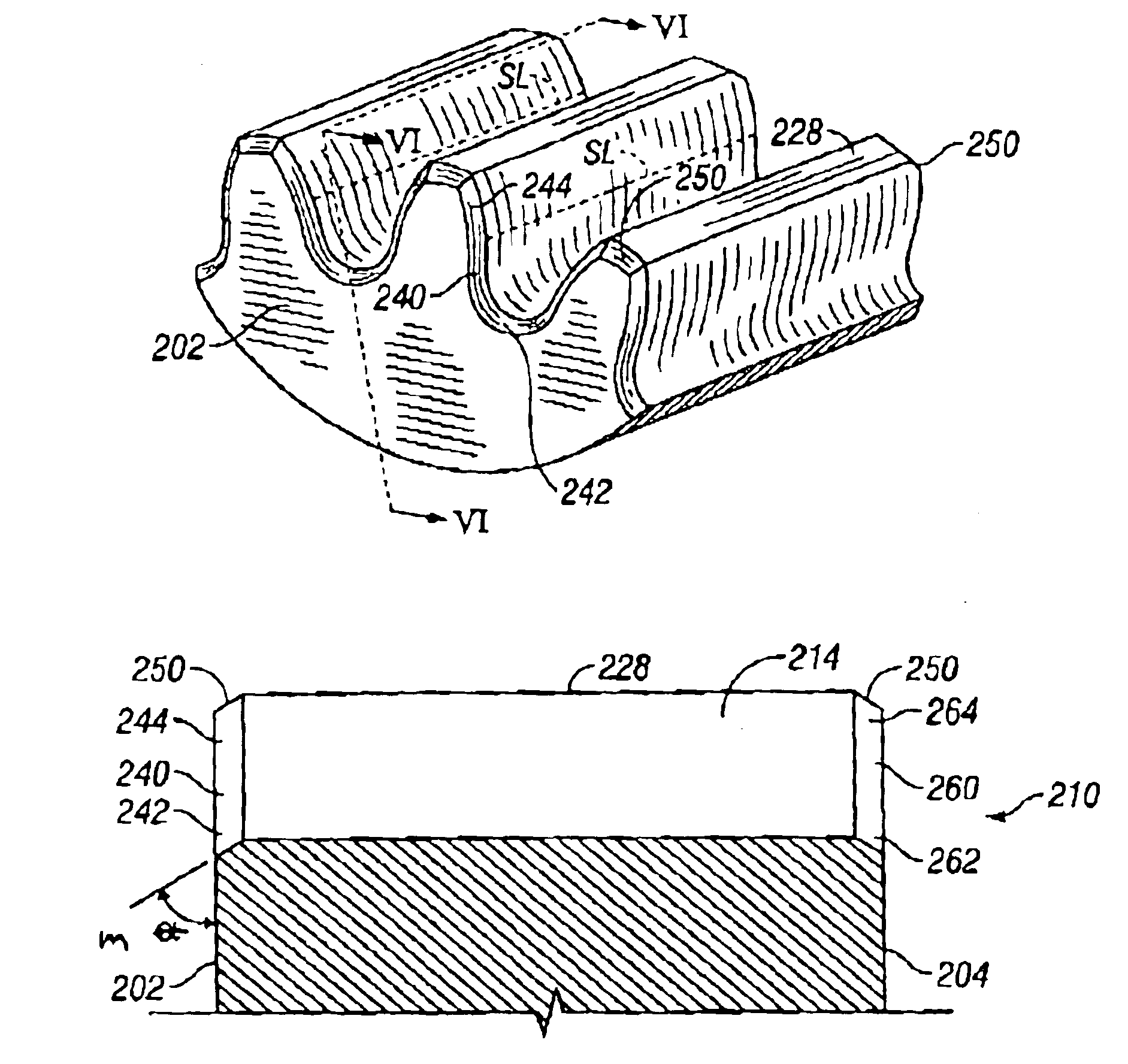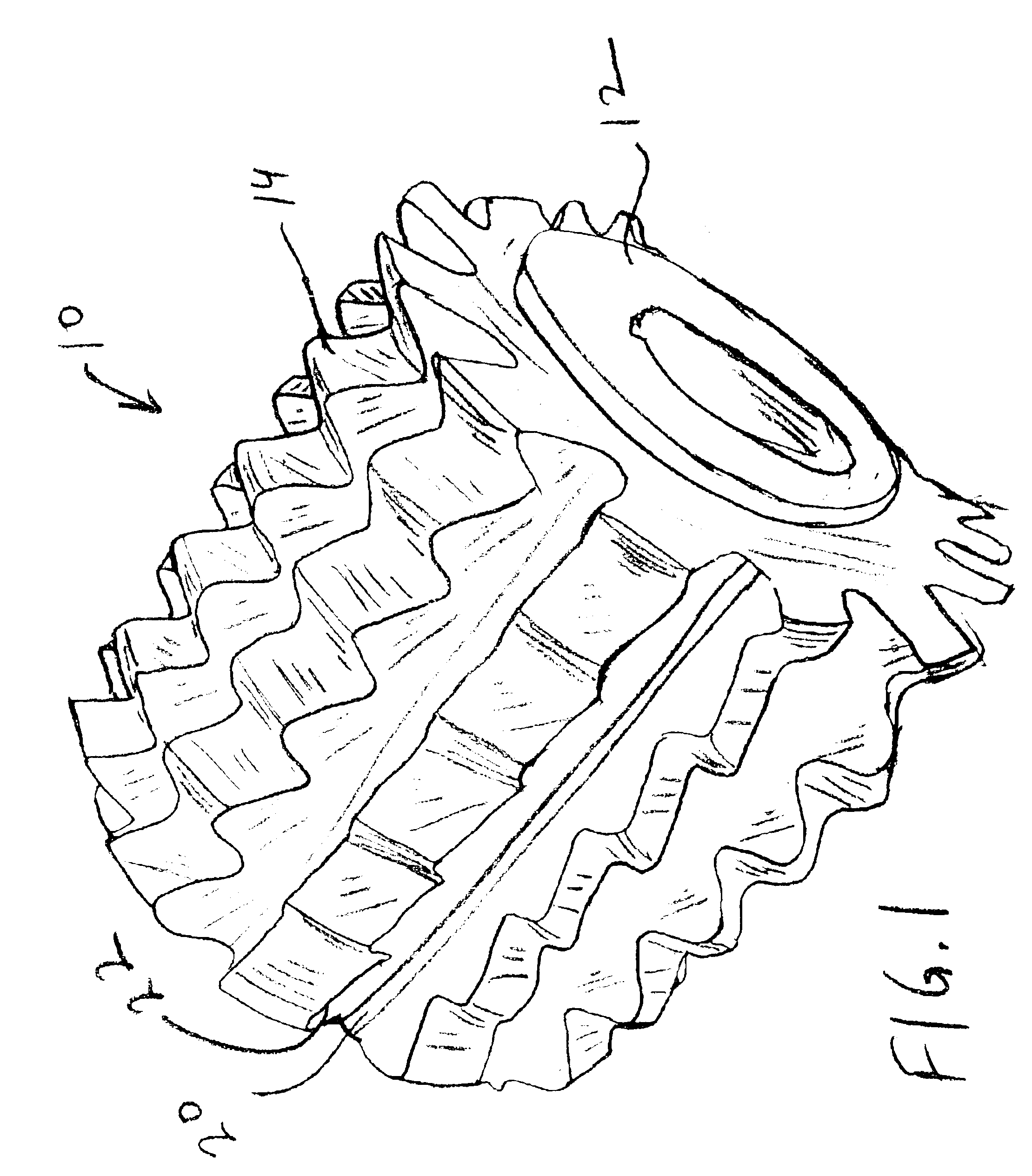Chamfer hob and method of use thereof
- Summary
- Abstract
- Description
- Claims
- Application Information
AI Technical Summary
Problems solved by technology
Method used
Image
Examples
Embodiment Construction
[0025]FIG. 1 shows in a perspective view, a hob 10 for providing a chamfer to both ends of a gear blank, which has previously been rough cut, is used at a stage after the gear teeth have been cut by a first hobbing procedure. A central bore 12 permits the insertion of the hob 10 over a shaft (not shown in FIG. 1) for facilitating gear blank rotation. The hob 10 is generally cylindrical in shape, and will have a number of cutting or milling teeth 14, arranged in longitudinal rows, as shown. Each tooth 14 essentially takes on the shape of sine wave, so that a row 16 of teeth 14 viewed in cross-section will appear as a virtually sinusoidal pattern. The exact shape of each tooth is a significant feature of the invention, as will be described below.
[0026]Although the teeth may initially be seen as being in identical and radially symmetrical rows, closer inspection will show, as is known by those with ordinary skill in the art, that each row of teeth is slightly offset in the axial or lon...
PUM
| Property | Measurement | Unit |
|---|---|---|
| Angle | aaaaa | aaaaa |
| Angle | aaaaa | aaaaa |
| Thickness | aaaaa | aaaaa |
Abstract
Description
Claims
Application Information
 Login to View More
Login to View More - R&D
- Intellectual Property
- Life Sciences
- Materials
- Tech Scout
- Unparalleled Data Quality
- Higher Quality Content
- 60% Fewer Hallucinations
Browse by: Latest US Patents, China's latest patents, Technical Efficacy Thesaurus, Application Domain, Technology Topic, Popular Technical Reports.
© 2025 PatSnap. All rights reserved.Legal|Privacy policy|Modern Slavery Act Transparency Statement|Sitemap|About US| Contact US: help@patsnap.com



